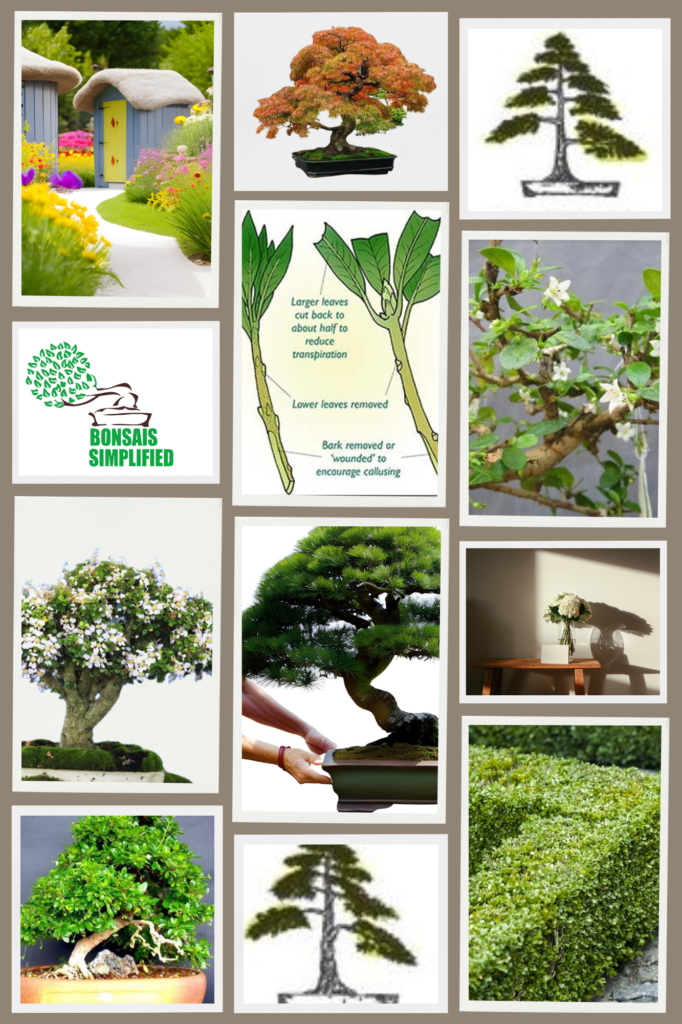How to Grow and Care for Carmona Bonsai (Fukien Tea Bonsai)
Care guide for the Carmona Bonsai tree (Fukien tea)
I. Introduction
Fukien Tea (Carmona microphylla), the sole species within the Carmona genus and a member of the Boraginaceae plant family, is a remarkable subtropical evergreen shrub. This enchanting plant is indigenous to various regions, including Japan, Indonesia, Taiwan, and Australia. However, it owes its renowned name to its place of origin – Fukien or Fujian, China.
Understanding the Fukien Tea: Characteristics and Growth
Impressive Height and Bark Texture The Fukien Tea is capable of reaching heights of up to 3 meters, showcasing its grandeur. Its bark, characterized by a captivating greyish-beige color, acquires an appealing fissured texture as it matures.
Distinctive Leaves Sporting small, leathery dark green leaves, the Fukien Tea boasts a glossy surface adorned with delicate white hairs. The leaves feature unique notches or indentations at their tips, adding an extra touch of visual interest to this exquisite plant.
Year-Round Blossoms The Fukien Tea delights with its star-shaped, dainty white flowers that grace the plant throughout the year. Growing in clusters of two to six blooms, these charming flowers emerge on short stems, enhancing the overall aesthetic appeal of the Fukien Tea bonsai tree.
Fruit and Seeds Following the flowering phase, the Fukien Tea produces round fruits that gradually transition from green to a vibrant red hue as they ripen. These fruits measure approximately 4 to 6 mm in diameter and house a stone core containing up to four seeds.
In China, the art of Penjing greatly values Fukien Tea bonsai trees, solidifying their popularity within the country. Meanwhile, in western countries, these captivating trees have become a favored choice for indoor bonsai cultivation. Their adaptability to indoor environments, combined with their aesthetic allure, has made them highly sought-after among bonsai enthusiasts worldwide.
To showcase the elegance of your Fukien Tea bonsai tree, select an appropriate display pot that complements its aesthetic. Consider using pots made of ceramics or clay, which not only provide stability but also enhance the overall visual appeal of the tree. Additionally, placing decorative rocks or moss around the base of the tree can add a touch of natural beauty to the composition.
Interesting Facts about Carmona Bonsai
II. Understanding Carmona Bonsai
Carmona retusa, commonly known as Fukien Tea, is a captivating plant species that offers both aesthetic beauty and versatility. Belonging to the Boraginaceae family, this evergreen shrub is the only species within the Carmona genus. Fukien Tea is native to various regions, including Japan, Indonesia, Taiwan, and Australia, but its name is derived from its place of origin, Fukien or Fujian, China.
Exquisite Appearance and Growth Characteristics
Fukien Tea showcases its natural beauty through its unique characteristics:
Growth Habit: This subtropical plant has a compact growth habit and can reach a height of up to 3 meters. Its branches form an elegant structure, with a gracefully spreading canopy.
Leaves: The small, leathery leaves of Fukien Tea are a rich, dark green color. They possess a glossy surface adorned with delicate white hairs, adding a touch of elegance. The leaves have notches or indentations at their tips, creating a distinct and attractive feature.
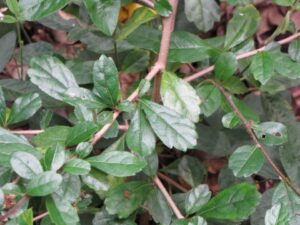
Flowers: Fukien Tea produces charming, star-shaped flowers that grace the plant throughout the year. These flowers, usually white in color, bloom in clusters of two to six, adorning the branches with delicate beauty.
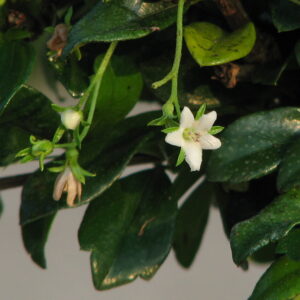
Fruit: Following the flowering period, Fukien Tea develops small round fruits that transition from green to a vibrant red hue as they ripen. These fruits, with a diameter of about 4 to 6 mm, contain a stone core housing up to four seeds.
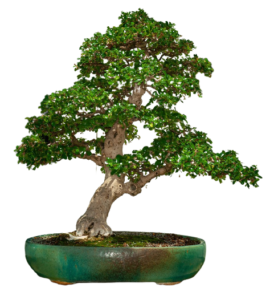 Carmona bonsai, derived from the Carmona retusa species, also known as Fukien Tea, offers a wide range of variations and styles for bonsai enthusiasts to explore. With its elegant growth habit, distinctive leaves, and year-round flowering, Carmona bonsai presents an opportunity to create visually captivating compositions. Let’s delve into some of the popular variations and styles of Carmona bonsai:
Carmona bonsai, derived from the Carmona retusa species, also known as Fukien Tea, offers a wide range of variations and styles for bonsai enthusiasts to explore. With its elegant growth habit, distinctive leaves, and year-round flowering, Carmona bonsai presents an opportunity to create visually captivating compositions. Let’s delve into some of the popular variations and styles of Carmona bonsai:
1. Formal Upright Style (Chokkan)
The formal upright style is one of the most common and classic bonsai styles. In this style, the trunk of the Carmona bonsai grows straight and upright, tapering gradually from the base to the apex. The branches are arranged symmetrically, with the lower branches slightly longer than those above. This style emphasizes a sense of strength and stability, showcasing the tree’s natural growth pattern.
2. Informal Upright Style (Moyogi)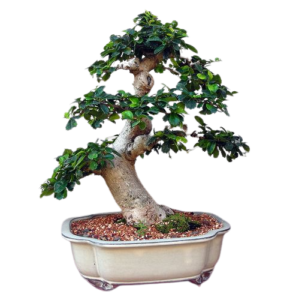
In contrast to the formal upright style, the informal upright style allows for more natural and dynamic movements in the trunk and branches. The trunk may exhibit gentle curves or slight twists, simulating the organic growth of a tree exposed to winds or other environmental factors. The branches are asymmetrical, with varying lengths and positions, giving the Carmona bonsai a sense of movement and vitality.
3. Slanting Style (Shakan)
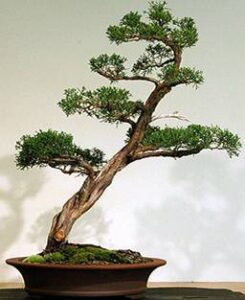 The slanting style represents a Carmona bonsai tree that appears to be growing at an angle as if it has been influenced by strong winds or other external forces. The trunk slants to one side while maintaining a balanced and harmonious structure. The branches typically grow in the opposite direction of the slant, adding a dynamic element to the overall composition.
The slanting style represents a Carmona bonsai tree that appears to be growing at an angle as if it has been influenced by strong winds or other external forces. The trunk slants to one side while maintaining a balanced and harmonious structure. The branches typically grow in the opposite direction of the slant, adding a dynamic element to the overall composition.
4. Cascade Style (Kengai)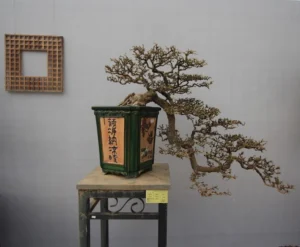
The cascade style imitates the appearance of a tree cascading down a cliff or over a watercourse. In this style, the trunk of the Carmona bonsai grows in a slanting or semi-vertical manner before gracefully cascading downward. The branches and foliage flow downward, creating a sense of movement and grace. The cascade style is often used to evoke a feeling of serenity and tranquillity.
5. Multi-Trunk Style (Ikadabuki)
 The multi-trunk style involves creating a Carmona bonsai with multiple trunks emerging from the base. These trunks can be arranged in a naturalistic manner, each displaying its unique movement and character. The multi-trunk style is ideal for replicating the appearance of a small grove or a group of trees growing nearby.
The multi-trunk style involves creating a Carmona bonsai with multiple trunks emerging from the base. These trunks can be arranged in a naturalistic manner, each displaying its unique movement and character. The multi-trunk style is ideal for replicating the appearance of a small grove or a group of trees growing nearby.
6. Literati Style (Bunjin)
The literati style, also known as the bunjin style, emphasizes the artistic expression of the Carmona bonsai. It features a tall, slender trunk that twists and turns gracefully, often resembling a calligraphy brushstroke. The branches are sparse, and the foliage is concentrated at the top, creating a sense of elegance and sophistication.
Conclusion: Unleashing Creativity with Carmona Bonsai
Carmona bonsai offers a wealth of possibilities when it comes to variations and styles, allowing bonsai enthusiasts to explore their creativity and artistic vision. Whether you prefer the formal upright style for a sense of stability or the cascade style for a touch of drama, Carmona bonsai trees provide a captivating canvas for bonsai enthusiasts to shape and cultivate. Embark on this bonsai journey and discover the endless beauty and artistic expression that Carmona bonsai can bring to your world.
III. Getting Started with Carmona Bonsai
When it comes to choosing a Carmona Bonsai, it’s important to select a healthy plant to ensure its longevity and beauty. Here are some tips to help you choose a healthy Carmona Bonsai:
Inspect the leaves: The leaves of a healthy Carmona Bonsai should be dark green and glossy. Avoid plants with yellow or wilted leaves, as this could be a sign of poor health or inadequate care.
Check for pests: Pests like aphids and spider mites are common problems with Carmona Bonsai. Look closely for any signs of pests on the leaves or branches. If you notice any, it’s best to choose a different plant.
Check the soil: The soil should be moist but not waterlogged. Avoid plants with dry or compacted soil, as this can indicate a lack of proper watering.
Inspect the roots: Healthy roots should be white or light brown and firm. Avoid plants with brown or mushy roots, as this can indicate root rot.
Check for proper growth: A healthy Carmona Bonsai should have balanced growth, with no one branch growing significantly longer or faster than the others. Additionally, the trunk should be straight and well-formed.
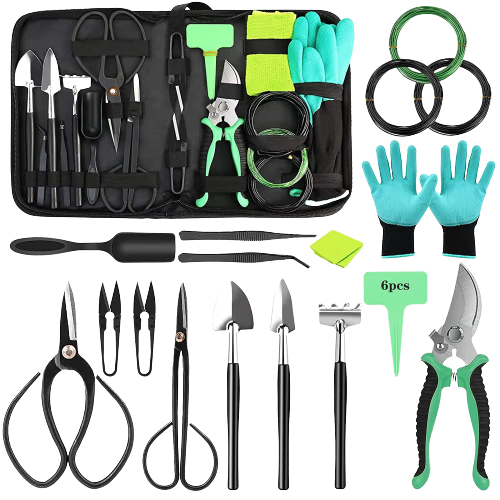 When it comes to growing Carmona Bonsai, having the right tools and equipment is essential for proper care and maintenance. Here are some essential tools and equipment you’ll need to cultivate and shape your Carmona Bonsai:
When it comes to growing Carmona Bonsai, having the right tools and equipment is essential for proper care and maintenance. Here are some essential tools and equipment you’ll need to cultivate and shape your Carmona Bonsai:
Bonsai Pruning Shears: Pruning shears are necessary for trimming and shaping your Carmona Bonsai. Choose a pair of bonsai-specific pruning shears that have a sharp blade for precise cuts without causing damage to the branches.
Bonsai Wire: Bonsai wire is used for training and shaping the branches of your Carmona Bonsai. It allows you to bend and position branches in the desired direction. Select bonsai wire of appropriate thickness and strength for the size and flexibility of your tree’s branches.
Bonsai Knob Cutters: Knob cutters are useful for removing larger branches or creating clean cuts close to the trunk. These specialized cutters help to promote proper healing and minimize scarring.
Bonsai Root Rake: A root rake gently combes and separates the roots during repotting. It helps to prevent tangling and allows for better distribution of soil in the root system.
Bonsai Soil: Choosing the right soil mix is crucial for the health and growth of your Carmona Bonsai. Bonsai soil should have good drainage properties while retaining enough moisture for the roots. It’s recommended to use a well-draining bonsai soil mix specifically formulated for bonsai cultivation.
Bonsai Fertilizer: Fertilizer provides essential nutrients for the growth and development of your Carmona Bonsai. Choose a balanced bonsai fertilizer that includes nitrogen, phosphorus, potassium, and micronutrients. Follow the recommended dosage and frequency of application for optimal results.
Bonsai Watering Can: A watering can with a fine nozzle is ideal for watering your Carmona Bonsai. It allows for controlled watering, ensuring that water reaches the root system evenly without causing soil erosion.
Bonsai Training Pots: Training pots provide ample space for root development and allow for the proper shaping of your Carmona Bonsai. These pots typically have additional drainage holes and are available in various sizes and materials, such as ceramic or plastic.
Bonsai Turntable: A turntable or bonsai stand allows you to rotate your Carmona Bonsai easily. This helps in even sunlight exposure and promotes the balanced growth of branches.
Bonsai Spray Bottle: A spray bottle filled with water is useful for misting the foliage of your Carmona Bonsai. This helps to maintain humidity levels and keep the leaves clean.
By selecting the right pot and soil for your Carmona Bonsai, you create an environment that promotes healthy growth and overall well-being for your tree. Remember to monitor the moisture levels, water your bonsai appropriately, and provide the necessary care for optimal health and vitality.
Selecting the right pot and soil is crucial for the health and growth of your Carmona Bonsai. Here’s a guide to help you make the best choices:
Pot Selection:
- Size: Choose a pot that allows for adequate root development while maintaining a balanced aesthetic. It should provide enough space for the roots to grow without being overly large.
- Drainage: Opt for a pot with drainage holes to ensure proper water drainage. This prevents waterlogging and helps prevent root rot.
- Material: Ceramic and clay pots are popular choices for Carmona Bonsai. They provide stability, good airflow to the roots, and better water retention properties compared to plastic pots. However, ensure the pot is well-made and of good quality to avoid any issues.
Soil Selection:
- Well-Draining: Carmona Bonsai requires a well-draining soil mix to prevent waterlogging and promote healthy root growth. Avoid using regular garden soil as it tends to retain too much moisture. Instead, use a bonsai-specific soil mix.
- Components: A suitable bonsai soil mix for Carmona Bonsai typically consists of a combination of organic and inorganic components. Common components include Akadama, pumice, lava rock, and organic matter such as composted pine bark or coconut coir. This blend provides good drainage, aeration, and nutrient retention.
- pH Level: Carmona Bonsai prefers a slightly acidic soil pH level. Aim for a pH range of 6.0 to 6.5. You can test the pH level using a soil pH testing kit available at gardening stores. How to make bonsai soil at home (2023)
Repotting Considerations:
- Repotting Frequency: Carmona Bonsai generally requires repotting every two to three years. This allows for root pruning and ensures a fresh supply of nutrients and proper root development.
- Timing: The best time to repot Carmona Bonsai is during the early spring, just before the new growth begins. This timing coincides with the tree’s natural growth cycle and promotes faster recovery.
- Pruning the Roots: During repotting, carefully prune the roots, removing any circling or tangled roots. This encourages new root growth and prevents root-bound conditions.
- Soil Replacement: While repotting, remove old soil from the root ball and replace it with fresh bonsai soil mix. Gently spread the roots in the new soil, ensuring proper coverage and avoiding air pockets.
Proper positioning and lighting play a vital role in the health and development of Carmona Bonsai. Providing the right conditions ensures optimal growth and helps maintain the tree’s overall well-being. Here’s a closer look at the importance of proper positioning and lighting for your Carmona Bonsai:
Positioning:
- Indoor vs. Outdoor: Carmona Bonsai can thrive both indoors and outdoors, depending on your climate and growing conditions. Understanding the specific needs of your bonsai will help you determine the best position.
- Temperature and Climate: Carmona Bonsai thrives in moderate temperatures between 60°F and 75°F (15°C to 24°C). Protect your bonsai from extreme temperature fluctuations, as it is sensitive to cold drafts and frost.
- Air Circulation: Ensure that your Carmona Bonsai receives proper air circulation, whether indoors or outdoors. Stagnant air can lead to fungal diseases or pest infestations. Placing your bonsai in a well-ventilated area helps maintain a healthy environment.
Lighting:
- Sunlight Requirements: Carmona Bonsai thrives in bright, indirect sunlight. Place it in a location that receives partial to full sunlight, depending on the intensity of the sun in your region. Morning sunlight is generally preferred over harsh afternoon sun.
- Indoor Lighting: If growing your Carmona Bonsai indoors, ensure it receives sufficient light. Place it near a south or southeast-facing window where it can receive a few hours of direct sunlight each day. Alternatively, use artificial grow lights to supplement natural light.
- Light Duration: Carmona Bonsai requires a balance between light and shade. Avoid exposing it to intense sunlight for extended periods as it can scorch the leaves. Similarly, insufficient light can lead to weak growth. Aim for around 6 to 8 hours of light exposure daily.
Positioning Tips:
- Rotating the Bonsai: To ensure even growth, rotate your Carmona Bonsai periodically. This helps all sides of the tree receive equal exposure to light, preventing lopsided growth.
- Consider Microclimates: Different areas within your home or garden may offer varying microclimates. Observe and experiment to find the ideal spot that provides the right balance of light, temperature, and air circulation for your Carmona Bonsai.
- Protecting from Harsh Conditions: During extreme weather conditions, such as strong winds, heavy rain, or frost, consider moving your bonsai to a more sheltered location to prevent damage.
Understanding the importance of proper positioning and lighting empowers you to create an environment that promotes the growth and well-being of your Carmona Bonsai. By providing the right amount of light and positioning your bonsai appropriately, you ensure a thriving and visually appealing tree for years to come.
How to Care for a Carmona bonsai?
IV. Watering and Moisture Management
Proper moisture management is crucial for the health of a Fukien tea tree. While it requires a consistently moist environment, overwatering can be harmful. Disregard any instructions suggesting daily watering for your Carmona, as it’s essential to base your watering schedule on careful observation. Once the soil surface starts to dry out, it’s time to water your tree generously. However, be cautious not to let it sit in excess water. Finding the right balance is key to maintaining a healthy moisture level for your Fukien tea tree.
When you have determined that the soil of your Fukien tea tree is slightly dry and requires watering, it is important to ensure that the entire root system receives thorough hydration. To achieve this, you should water the tree until water starts running out of the bottom drainage holes. If necessary, you can repeat the watering process after a few minutes to ensure proper saturation.
To avoid disturbing the soil, it is recommended to use a watering can with a fine nozzle and pour water from above. This prevents the soil from being washed away and allows for a controlled and gentle watering process. If you keep your Bonsai indoors, you can place the tree in your kitchen sink for watering and then return it to its original location.
While rainwater is ideal due to its lack of added chemicals, using normal tap water is acceptable when rainwater is not readily available.
To help you avoid common watering mistakes that can harm your Carmona bonsai, we’ve compiled a list of important considerations:
1. Overwatering
Overwatering is one of the most common mistakes made by bonsai enthusiasts. It can lead to root rot, oxygen deprivation, and an overall decline in the health of your Carmona bonsai. To avoid overwatering, ensure that the soil has dried out slightly before watering again. Stick to a regular watering schedule but adjust it based on the specific needs of your Carmona bonsai and the environmental conditions. Remember, it’s better to underwater slightly than to overwater.
2. Underwatering
While overwatering is a common mistake, underwatering can also have detrimental effects on your Carmona bonsai. Insufficient water can lead to dehydration, wilting, and weak growth. Monitor the moisture levels in the soil and water your bonsai thoroughly when it is necessary. Maintaining a consistent watering routine will help prevent underwatering.
3. Improper Drainage
Proper drainage is essential for Carmona bonsai to prevent waterlogged roots and root rot. Ensure that your bonsai pot has sufficient drainage holes and that the soil is well-draining. Using a well-balanced bonsai soil mix that includes components like perlite, vermiculite, or crushed granite can improve drainage and prevent water from stagnating.
4. Inadequate Watering Techniques
When watering your Carmona bonsai, it’s important to apply water evenly throughout the soil to ensure thorough hydration. Avoid spraying water directly on the leaves as it can lead to fungal diseases. Instead, focus on watering the soil surface and allowing the water to reach the root system. This will help your bonsai absorb the necessary moisture and nutrients.
5. Neglecting Environmental Factors
Environmental factors such as temperature, humidity, and sunlight can influence the watering needs of your Carmona bonsai. During hotter months or in drier climates, you may need to increase the frequency of watering to compensate for increased evaporation. Similarly, in cooler months or more humid conditions, you may need to reduce watering to prevent waterlogged soil. Observe your bonsai and adjust the watering accordingly based on the prevailing environmental conditions.
Creating the optimal environment for your Carmona bonsai goes beyond proper watering techniques. Humidity is another crucial factor that significantly influences the health and growth of these beautiful miniature trees. In their natural habitat, Carmona bonsai thrive in subtropical regions with relatively high humidity levels. Replicating these conditions in your bonsai’s environment will contribute to its overall well-being. In this section, we will explore the humidity requirements of Carmona bonsai and provide you with valuable insights on how to maintain suitable humidity levels to promote their vitality.
Ideal Humidity Range for Carmona Bonsai
While Carmona bonsai can tolerate a range of humidity levels, maintaining a relative humidity of around 50% to 70% is ideal. This range mimics the conditions found in their natural habitats and allows the bonsai to thrive. However, it’s important to note that these humidity preferences may vary slightly depending on the specific climate and growing conditions in your region.
Increasing Humidity Levels
Creating a suitable environment with higher humidity levels for your Carmona bonsai can be achieved through various methods:
1. Humidity Trays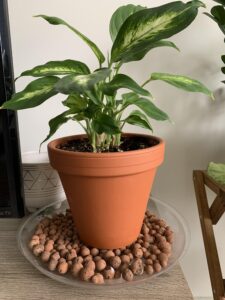
Placing your bonsai pot on a humidity tray filled with water and pebbles can help increase the surrounding humidity. As the water evaporates, it raises the humidity levels around the bonsai. Ensure that the water level in the tray is below the bottom of the bonsai pot to prevent the roots from soaking in water.
2. Grouping Bonsai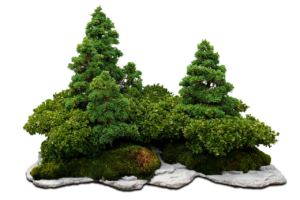
Grouping multiple bonsai trees together can create a microclimate with higher humidity. As the bonsai transpire and release moisture into the air, the collective effect can increase the overall humidity levels. Be mindful of providing sufficient space between the bonsai to avoid overcrowding and potential disease transmission.
3. Humidifiers
Using a humidifier in the vicinity of your Carmona bonsai can be an effective way to regulate humidity levels. These devices emit a fine mist or vapor, increasing the moisture content in the air. Place the humidifier nearby, ensuring that the mist is dispersed evenly and not directed towards the bonsai’s foliage.
4. Misting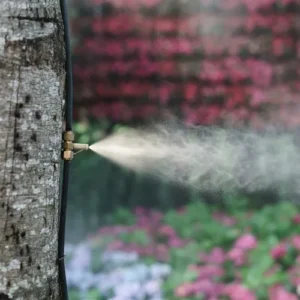
Regularly misting the foliage of your Carmona bonsai can provide a temporary boost in humidity. Fill a spray bottle with clean, room temperature water and mist the leaves, taking care to avoid excessive moisture accumulation on the soil surface. Misting is particularly beneficial during hot and dry periods.
Decreasing Humidity Levels
In certain climates or indoor environments with excessive humidity, it may be necessary to reduce the moisture levels around your Carmona bonsai. Here are a few methods to consider:
1. Air Circulation
Improving air circulation around the bonsai can help reduce humidity. Use a small fan or ensure that there is adequate ventilation in the room where your bonsai is located. Good airflow will assist in dissipating excess moisture from the surrounding air.
2. Dehumidifiers
Dehumidifiers are useful devices for decreasing humidity levels in enclosed spaces. They work by extracting moisture from the air, creating a drier environment. If the humidity in your area is consistently high, a dehumidifier can be an effective solution for maintaining suitable
V. Fertilizing and Nutrient Requirements
The sensitive roots of the Fukien Tea Bonsai thrive when nourished with high-quality organic fertilizer. A solid form of fertilizer proves particularly effective in catering to the unique needs of this bonsai variety. However, it is worth noting that liquid fertilizers can also be utilized, but with utmost caution and in precise measurements, ensuring that they are applied only to moist soil.
To ensure optimal growth and health of your Fukien Tea Bonsai, it is crucial to provide it with nourishment throughout the seasons, primarily from spring to autumn. It is advisable to meticulously adhere to the recommended guidelines for fertilizer application, following the specific instructions provided. During the winter season, the frequency of feeding should be reduced compared to the other seasons.
Selecting the appropriate fertilizers for your Carmona Bonsai is essential for its growth and overall health. The following considerations can help you make the right choice:
Balanced Nutrients: Opt for a fertilizer that provides a balanced blend of essential nutrients. Look for options that contain a mix of nitrogen (N), phosphorus (P), and potassium (K), as well as trace elements like iron (Fe) and magnesium (Mg). These nutrients support the bonsai’s overall development and ensure its vitality.
Slow-Release Formulas: Consider using slow-release fertilizers that gradually release nutrients over an extended period. This allows for a steady and controlled nutrient uptake by the Carmona Bonsai, reducing the risk of overfeeding or nutrient imbalances.
Organic or Synthetic: Decide whether you prefer organic or synthetic fertilizers. Organic options, such as compost or well-rotted manure, provide nutrients in a natural and slow-release form. Synthetic fertilizers, on the other hand, deliver nutrients in a readily available form and allow for more precise control over nutrient ratios.
pH Considerations: Take into account the pH requirements of the Carmona Bonsai when selecting a fertilizer. It thrives in slightly acidic to neutral soil conditions (pH 6 to 7). Ensure that the fertilizer you choose does not significantly alter the pH of the soil.
Seasonal Variations: Adjust the frequency and dosage of fertilization based on the season. During the growing season (spring to autumn), when the bonsai is actively growing, apply fertilizer according to the recommended guidelines. Reduce the frequency and strength of fertilization during the winter months when the bonsai goes through a period of dormancy.
The frequency and timing of fertilization play a crucial role in maintaining the optimal health and growth of your bonsai. Consider the following guidelines when determining how often and when to fertilize your bonsai:
Growth Season: During the active growth season, which typically spans from spring to autumn, your bonsai will have increased nutrient requirements. Fertilize regularly during this period to provide the necessary nourishment for vigorous growth. Depending on the fertilizer type and the specific needs of your bonsai species, this may range from monthly to bi-weekly applications.
Dormant Season: In the winter months, when your bonsai enters a period of dormancy, its nutrient requirements decrease significantly. It’s important to reduce the frequency of fertilization during this time to avoid overfeeding and to allow the tree to rest. Depending on the species and its specific needs, you may opt to fertilize sparingly or temporarily suspend fertilization altogether.
Fertilizer Type: Different fertilizers have varying release rates and durations. Read the instructions on the fertilizer packaging to determine the recommended frequency of application. Some fertilizers may require more frequent applications, while others, particularly slow-release fertilizers, may have longer intervals between applications.
Many bonsai enthusiasts prefer to use organic fertilizers instead of chemical options for their bonsai trees. Organic alternatives offer a more natural and environmentally friendly option that can also provide several benefits to your bonsai’s health and growth. Here are some organic alternatives to chemical fertilizers:
Compost: Composting is an excellent way to produce high-quality organic fertilizer. Compost can be made using kitchen scraps, garden waste, and other organic matter. It is rich in nutrients and beneficial microorganisms, which can improve soil structure and support healthy root growth. Apply compost to the soil surface or mix it with soil before planting.
Worm Castings: Vermicomposting is another effective way to produce organic fertilizer. Worm castings contain high levels of nutrients, enzymes, and beneficial microorganisms that support healthy soil and plant growth. Apply worm castings to the soil surface or mix it with soil.
Fish Emulsion: Fish emulsion is a liquid fertilizer made from fish waste. It is a rich source of nitrogen, phosphorus, and trace minerals, making it an excellent choice for promoting vigorous growth. Dilute fish emulsion in water and apply it to the soil or foliage.
Seaweed Extract: Seaweed extract is a natural fertilizer made from seaweed. It contains essential nutrients, amino acids, and growth hormones that support healthy growth and improve stress tolerance. Dilute seaweed extract in water and apply it to the soil or foliage.
Bone Meal: Bone meal is a slow-release fertilizer made from ground animal bones. It is a good source of phosphorus and calcium, which supports healthy root growth and flower development. Mix bone meal into the soil before planting or apply it as a top dressing.
Organic fertilizers can provide many benefits to your bonsai tree, including improved soil structure, enhanced nutrient uptake, and increased resistance to pests and diseases. They may also be a more sustainable and environmentally friendly option. Remember to follow the recommended dosage and application guidelines for the specific organic fertilizer you choose.
VI. Pruning and Shaping Techniques
Pruning plays a vital role in the care and maintenance of Carmona Bonsai trees, offering numerous benefits for their health, aesthetics, and overall development. Understanding the importance of pruning will help you effectively shape and nurture your Carmona Bonsai. Here are key reasons why pruning is crucial:
Encourages Branch and Foliage Density: Pruning helps stimulate the growth of new branches and foliage, leading to a denser and more compact appearance. By selectively removing excess growth, you promote the development of a balanced and well-proportioned bonsai.
Enhances Bonsai’s Shape and Form: Through pruning, you can sculpt the bonsai into your desired shape and form. Trimming back long branches, removing unwanted shoots, and maintaining a harmonious silhouette create an aesthetically pleasing bonsai with a defined structure.
Controls Size and Proportions: Carmona Bonsai trees have a natural tendency to grow vigorously. Regular pruning allows you to manage their size and proportions. By trimming back growth and maintaining appropriate branch length, you can prevent the bonsai from becoming overly large or disproportionate.
Promotes Health and Vigor: Pruning helps improve the overall health and vitality of the Carmona Bonsai. By removing dead, damaged, or diseased branches, you prevent the spread of infections and promote the growth of healthy tissue. Pruning also increases air circulation and sunlight penetration, reducing the risk of fungal diseases.
Supports Ramification and Fine Branching: Through selective pruning, you encourage ramification, which is the development of smaller secondary branches. Ramification creates a more refined and mature appearance, enhancing the bonsai’s beauty and mimicking the intricate branching patterns found in nature.
Timing and Techniques: It is essential to understand the appropriate timing and techniques for pruning your Carmona Bonsai. Generally, pruning is performed during the bonsai’s dormant period in late winter or early spring. Techniques such as branch pruning, leaf pruning, and pinching can be utilized to achieve the desired results.
Remember, pruning should be done with care and precision. Avoid excessive pruning, as it can weaken the tree or disrupt its natural growth pattern. Regularly monitor the health and growth of your Carmona Bonsai, and adjust your pruning routine accordingly to maintain its balance and vitality.
To effectively prune your Carmona Bonsai and maintain its health and aesthetics, it is crucial to have the right tools and employ proper techniques. Here are the essential tools and techniques for pruning your Carmona Bonsai:
Pruning Shears: Pruning shears, also known as bonsai shears or secateurs, are essential for precise and clean cuts. Choose a high-quality pair with sharp blades to ensure smooth pruning without damaging the branches.
Branch Cutters: Branch cutters, or concave cutters, are designed specifically for removing thicker branches. These cutters create concave cuts, which aid in the healing and sealing of wounds, resulting in a more natural and aesthetically pleasing appearance.
Knob Cutters: Knob cutters are useful for removing larger knobs or bulges that may form after branch removal. These cutters allow for precise trimming and help create smoother transition points where branches are pruned.
Root Pruning Shears: Root pruning shears are necessary for maintaining the health and size of the bonsai’s root system. These specialized shears allow for precise cutting and trimming of the roots during repotting or root maintenance.
Techniques for Pruning Carmona Bonsai:
- Branch Pruning: Selectively prune branches to maintain the desired shape and form of the bonsai. Remove any dead, damaged, or crossing branches. Trim back excessive growth to encourage ramification and branch density.
- Leaf Pruning: Carmona Bonsai can have a dense foliage structure. Leaf pruning involves selectively removing or trimming leaves to maintain proper light penetration and airflow. This technique encourages smaller leaf growth and enhances the overall aesthetics of the bonsai.
- Pinching: Pinching is a technique where you use your fingers or bonsai tweezers to remove the soft tips of new shoots. This encourages branching and creates a more compact growth habit.
- Wiring: Wiring can be used in conjunction with pruning to shape and position branches. Carefully wrap bonsai wire around branches to guide their growth in the desired direction. Be cautious not to wire too tightly to avoid damaging the branches.
Remember to sterilize your pruning tools before and after each use to prevent the spread of diseases. Additionally, study the specific growth patterns and needs of Carmona Bonsai to determine the appropriate timing and techniques for pruning.
10 Expert Tips & Tricks for Gardening Bonsai
Structural pruning is a fundamental technique used in bonsai cultivation to shape and maintain the aesthetics of the tree. This pruning approach focuses on creating a well-balanced and visually appealing structure for your bonsai. Here are key considerations and techniques for structural pruning:
Design Concept: Before initiating structural pruning, it’s important to have a clear design concept in mind. Consider the desired style for your bonsai, such as formal upright, informal upright, cascade, or windswept. The design concept will guide your pruning decisions and help you achieve the desired aesthetic.
Branch Selection: Carefully choose the primary branches that form the tree’s main framework. These branches should be well-positioned, radiate from the trunk in a balanced manner, and reflect the natural growth patterns of the species. Select branches with good taper and interesting movement.
Trunk Development: Structural pruning can involve removing unwanted or poorly positioned branches to enhance the development of the trunk. By eliminating competing branches or those that disrupt the desired flow of the tree, you can emphasize the trunk’s movement and create a more visually appealing focal point.
Branch Placement: Consider the placement of secondary and tertiary branches to ensure a harmonious and balanced structure. Position branches to create depth, perspective, and an overall sense of visual harmony. Utilize techniques like wiring and branch bending to shape and position branches as needed.
Apical Dominance: Maintain apical dominance, which means allowing the uppermost or leading branch to be slightly more dominant in growth than lower branches. This encourages upward growth and prevents lower branches from overshadowing the tree’s overall silhouette. Regularly prune the leading branch to control its growth and maintain balance.
Fine Branching and Ramification: Structural pruning also involves encouraging fine branching and ramification, which adds a sense of maturity and refinement to the bonsai. Regularly prune and pinch back shoots to promote the growth of smaller, more compact branches, creating a more intricate and realistic appearance.
Regular Maintenance: Structural pruning is an ongoing process. Regularly assess and adjust the structure of your bonsai as it continues to grow and develop. Prune back new shoots, remove unwanted growth, and refine branch placement to maintain the desired aesthetic and ensure long-term health.
Remember, structural pruning should be done gradually and with patience. It is a technique that requires careful observation and an understanding of the tree’s growth patterns. Each bonsai is unique, so adapt your pruning techniques to suit the specific characteristics and style of your tree.
Wiring is a valuable technique used in bonsai cultivation to shape and position branches, allowing you to create the desired forms and styles for your tree. Proper wiring ensures that branches develop in the desired direction and enhances the overall aesthetics of the bonsai. Here are important considerations and techniques for wiring and shaping branches:
Selecting the Right Wire: Choose appropriate bonsai wire based on the thickness and flexibility of the branches. Aluminum wire is commonly used due to its ease of use and flexibility. The wire should be approximately one-third the thickness of the branch you are wiring.
Timing for Wiring: Wiring is typically done during the tree’s active growing season, when branches are more pliable and responsive. This is usually in spring or early summer for most bonsai species. Avoid wiring during times of dormancy or when the branches are brittle to prevent damage.
Branch Preparation: Before applying wire, ensure that the branches are clean and free of obstacles such as leaves or thorns. If necessary, remove excess foliage or trim large leaves to facilitate the wiring process.
Wiring Techniques: Start by anchoring the wire to the trunk or a sturdier branch, and then gently and carefully wrap it around the target branch. Maintain a consistent tension while wrapping, ensuring the wire is firmly but not too tightly secured. Avoid crossing wires to prevent damage to the bark.
Branch Placement and Movement: Guide the branches in the desired direction by bending and shaping them using the wire. Slowly and gradually apply pressure to reshape the branch, taking care not to snap or break it. Achieve the desired curves and angles to create the intended form or style of the bonsai.
Wiring Duration: Leave the wire on the branches for a sufficient amount of time to allow them to set in the desired position. The duration can vary depending on the species and the thickness of the branches. Regularly monitor the wire to prevent it from cutting into the bark as the branches thicken and grow.
Wire Removal: Once the branches have set in the desired position, carefully remove the wire to avoid damaging the bonsai. Use wire cutters to cut the wire at each loop, taking care not to injure the branch or trunk. Unwind and remove the wire gently, making any necessary adjustments to the branch positioning as you go.
Remember to regularly check the wired branches for any signs of wire cutting into the bark. Adjust the wire or remove it promptly if this occurs. Exercise patience and care when wiring and shaping branches, as it is a gradual process that requires attention to detail and the tree’s response.
VII. Repotting and Root Care
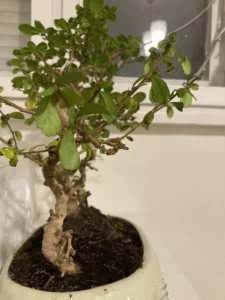 Knowing when to repot your bonsai is crucial for its overall health and vitality. Several signs indicate that repotting is necessary to provide your bonsai with adequate space for root growth and nutrient uptake. Here are the key signs to look for:
Knowing when to repot your bonsai is crucial for its overall health and vitality. Several signs indicate that repotting is necessary to provide your bonsai with adequate space for root growth and nutrient uptake. Here are the key signs to look for:
Root Bound: One of the most obvious signs that your bonsai needs repotting is when it becomes root bound. This occurs when the roots have filled the pot, forming a dense mass. Look for roots circling the edges of the soil or protruding from drainage holes.
Reduced Growth or Vigor: If you notice that your bonsai’s growth has significantly slowed down or its overall vigour has declined, it may be an indication that the roots have exhausted the available nutrients in the soil. Repotting provides fresh soil and nutrients, stimulating new growth.
Water Drainage Issues: Poor water drainage, such as water pooling on the soil surface or taking longer than usual to drain, suggests that the soil has become compacted over time. This can hinder root health and lead to issues like root rot. Repotting allows for improved soil structure and drainage.
Degraded Soil: Over time, the soil in the bonsai pot may break down and become compacted. If you notice that the soil has become dense, clumpy, or water-repellent, it may be time to repot. Fresh, well-draining soil provides a healthier environment for root development.
Foliage Discoloration or Weakness: If you observe yellowing leaves, stunted growth, or overall weak foliage, it may indicate that the roots are not receiving sufficient nutrients or oxygen. Repotting can help rejuvenate the bonsai by providing fresh soil and promoting healthier root growth.
Timing: Repotting is typically done during the bonsai’s dormant period, which is often in early spring before new growth begins. However, different bonsai species may have specific reporting requirements. Consult species-specific guidelines to determine the optimal repotting timing for your bonsai.
When repotting, ensure you have the appropriate pot size and fresh bonsai soil mix. Carefully remove the bonsai from its current pot, prune any excessively long or damaged roots, and place it in the new pot with fresh soil. After repotting, provide proper aftercare, including adequate watering and a gradual reintroduction to sunlight.
Regular repotting, typically every two to three years, helps maintain the health and vitality of your bonsai by ensuring optimal root growth and nutrient uptake. However, always assess the specific needs of your bonsai species and monitor its overall condition to determine the frequency of repotting.
Repotting a Carmona Bonsai is an essential task that promotes the health and development of the tree’s root system. Follow these steps to repot your Carmona Bonsai successfully:
Timing: Repot your Carmona Bonsai during its dormant period, which is typically in early spring before the onset of new growth. This allows the tree to recover quickly and minimize stress.
Gather the Necessary Tools: Prepare the tools and materials you will need, including bonsai shears, root pruning shears, a bonsai soil mix, a new bonsai pot, mesh or drainage screens, and wire (if needed).
Preparation: Carefully remove the bonsai from its current pot. Gently loosen the soil around the edges of the root ball using a root hook or a chopstick. This helps separate the roots from the soil and facilitates root pruning.
Root Pruning: Inspect the root system and trim any excessively long, damaged, or tangled roots. Use root pruning shears to make clean cuts. Aim to remove approximately one-third of the root mass to encourage new root growth.
Pot Selection: Choose a new pot that is slightly larger than the current one. Ensure the pot has sufficient drainage holes to prevent waterlogging. Place mesh or drainage screens over the drainage holes to prevent soil from escaping.
Soil Mix: Prepare a well-draining bonsai soil mix suitable for Carmona Bonsai. The mix should consist of a combination of organic matter, such as bonsai soil, akadama, pumice, and perlite. This mixture provides adequate drainage and aeration for the roots.
Positioning in the New Pot: Place a layer of fresh soil mix in the bottom of the new pot. Position the Carmona Bonsai in the pot, ensuring it is centered and at the desired height. Gently spread out the roots, taking care not to damage them.
Backfilling: Gradually add the soil mix around the roots, using a chopstick or a small trowel to ensure the soil fills in all the gaps. Gently tap the pot to settle the soil and eliminate any air pockets.
Finishing Touches: Once the soil is in place, water the bonsai thoroughly to help settle the soil further. Top-dress with a layer of moss or small pebbles to enhance the aesthetic appeal and retain moisture.
Aftercare: Place the repotted Carmona Bonsai in a shaded area for a few weeks to allow it to recover and adjust to its new environment. Provide regular watering, taking care not to overwater, and gradually reintroduce the bonsai to sunlight.
Remember to monitor your Carmona Bonsai closely after repotting, ensuring it receives appropriate care and attention during the recovery period. Observe the tree for signs of stress and adjust your care routine accordingly.
Root pruning and proper maintenance of the root ball are essential for the health and development of a bonsai tree. Here are the steps to perform root pruning and maintain the root ball effectively: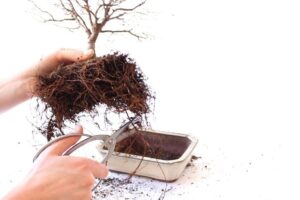
Timing: Root pruning is typically done during the dormant period of the bonsai, which is usually in early spring before the onset of new growth. This allows the tree to recover more quickly and reduces stress.
Preparation: Carefully remove the bonsai from its pot and gently shake off excess soil to expose the root ball. This will provide better visibility and access to the roots for pruning.
Inspect the Root Ball: Examine the root ball for any signs of root congestion, tangling, or circling roots. Look for damaged or decaying roots that need to be removed. Observe the overall health and vigour of the roots.
Root Pruning: Using root pruning shears or sharp scissors, trim the roots that are overly long, thick, damaged, or tangled. Make clean cuts, avoiding tearing or crushing the roots. Aim to maintain a balance between the root mass and the tree’s foliage.
Address Circling Roots: If you find roots that are circling the root ball, carefully untangle and spread them out. You can also make vertical cuts along the sides of the root ball to encourage outward root growth.
Rake Out Excess Soil: Use a root rake or comb to gently comb out and untangle the roots, removing any compacted soil or debris. This will help aerate the root system and promote healthy root growth.
Adjusting the Root Ball: If necessary, trim the root ball’s edges to create a neater, more compact shape. This helps the roots fit comfortably within the pot and ensures proper drainage.
Repotting or Refreshing the Soil: After root pruning, you can either repot the bonsai in a fresh pot with new soil or refresh the existing soil in the same pot. Use a well-draining bonsai soil mix suitable for the specific tree species.
Watering and Recovery: After root pruning and repotting, water the bonsai thoroughly to settle the soil around the roots. Place the bonsai in a shaded area to minimize stress and allow the tree to recover. Monitor the moisture levels and adjust watering as needed.
Post-Pruning Care: Provide appropriate aftercare, including regular watering, light fertilization, and protection from extreme weather conditions. Observe the bonsai closely for signs of stress or any potential issues.
Regularly inspect and maintain the root ball of your bonsai to ensure healthy root development and overall tree vitality. Remember that root pruning should be done with care and moderation, as excessive or improper pruning can harm the bonsai. Each bonsai species may have specific root maintenance requirements, so consult species-specific guidelines for more precise instructions.
The ideal repotting frequency for Carmona Bonsai depends on several factors, including the age of the tree, its growth rate, and the condition of the root system. Generally, Carmona Bonsai should be repotted every two to three years to maintain their health and promote optimal root development. However, it is important to assess the specific needs of your Carmona Bonsai and monitor its overall condition to determine the frequency of repotting. Here are some considerations to help determine when to repot your Carmona Bonsai:
Root Health and Development: Regularly check the root system of your Carmona Bonsai to assess its health and growth. If you observe a dense mass of roots circling around the root ball or protruding from the drainage holes, it indicates that the tree has become root bound and requires repotting.
Soil Quality and Drainage: Over time, the soil in the bonsai pot may break down, become compacted, and lose its ability to provide proper drainage. If you notice water pooling on the soil surface or drainage issues during watering, it may be a sign that the soil needs refreshing and repotting is necessary.
Nutrient Depletion: As the Carmona Bonsai grows, it utilizes the nutrients present in the soil. Repotting provides an opportunity to replenish the soil with fresh nutrients, promoting the tree’s overall health and vitality.
Trunk and Branch Development: If you aim to develop a thicker trunk or encourage specific branch growth, repotting can facilitate these goals. Repositioning the tree in the pot or adjusting the angle of certain branches during repotting can help achieve the desired aesthetic and structural development.
Growth Rate: Carmona Bonsai tends to have a moderate growth rate. If you observe vigorous growth, such as dense foliage and rapid root development, it may be an indication that the tree requires repotting more frequently than the standard two to three-year interval.
It’s important to note that Carmona Bonsai may show some signs of stress immediately after repotting. Therefore, provide proper aftercare, including shade, adequate watering, and gradually reintroducing the bonsai to sunlight. This helps minimize stress and allows the tree to adjust to its new environment.
Always evaluate the specific needs of your Carmona Bonsai and consider the aforementioned factors when determining the optimal repotting frequency. Regularly monitoring the tree’s health, growth, and root system will guide you in making informed decisions about when to repot.
VIII. Dealing with Pests and Diseases
Carmona Bonsai, like any other plant, can be susceptible to various pests that can negatively impact its health and appearance. Being aware of the common pests that affect Carmona Bonsai is essential for early detection and effective pest management. Here are some of the most common pests to watch out for:
Aphids: These small, soft-bodied insects feed on the sap of the Carmona Bonsai, causing stunted growth, distorted leaves, and the presence of sticky honeydew. Aphids can reproduce rapidly, so it’s crucial to address an infestation promptly.
Mealybugs: Mealybugs are tiny, white, cottony insects that gather in clusters on the foliage, stems, and undersides of leaves. They suck sap from the plant, resulting in weakened growth, yellowing leaves, and the presence of sticky residue.
Scale Insects: Scale insects appear as small, brown, or black bumps on the Carmona Bonsai’s stems and leaves. They feed on plant tissues, causing yellowing leaves, stunted growth, and, in severe cases, even plant death. Scale insects can be challenging to eliminate due to their protective waxy covering.
Spider Mites: These microscopic pests are difficult to see with the naked eye. Spider mites thrive in dry conditions and often infest Carmona Bonsai, causing yellowing leaves, fine webbing, and stippled, discolored foliage. Heavy infestations can lead to leaf drop.
Whiteflies: Whiteflies are small, flying insects that cluster on the undersides of leaves. They feed on the plant sap, causing yellowing leaves, stunted growth, and the presence of sticky honeydew. Infested Carmona Bonsai may also exhibit sooty mold growth.
Caterpillars: Certain caterpillar species may target Carmona Bonsai, chewing on the leaves and causing significant damage. Look for visible feeding damage, skeletonized leaves, and caterpillar presence on the plant.
Fungus Gnats: These small, mosquito-like insects are more of a nuisance than a direct threat to the Carmona Bonsai. However, their larvae can feed on the roots, leading to root damage and reduced plant vigor.
To manage pest infestations on Carmona Bonsai, a combination of cultural and chemical control methods can be employed. These include:
- Regularly inspecting the plant for signs of pests.
- Removing heavily infested leaves or branches.
- Washing the foliage with a mild soap and water solution to control minor infestations.
- Applying organic or chemical insecticides as directed, targeting the specific pests.
- Maintaining proper cultural practices, such as maintaining good air circulation, avoiding overwatering, and providing adequate sunlight, to promote plant health and resilience.
It’s important to note that the use of chemical insecticides should be approached with caution, following the instructions and guidelines provided by the manufacturer. Integrated Pest Management (IPM) practices that combine preventive measures, regular monitoring, and targeted treatments are often the most effective approach to managing pests on Carmona Bonsai.
Implementing preventive measures is crucial to maintaining the health and vitality of Carmona Bonsai. By taking proactive steps, you can minimize the risk of pest infestations and diseases, ensuring the long-term well-being of your bonsai. Here are some preventive measures to keep your Carmona Bonsai healthy:
Proper Watering: Water the bonsai appropriately, ensuring that the soil is moist but not waterlogged. Avoid overwatering, as it can lead to root rot and other fungal diseases. Conversely, do not let the soil dry out completely, as this can stress the tree.
Well-Draining Soil: Use a well-draining bonsai soil mix that allows excess water to drain away easily. This helps prevent waterlogged conditions and root suffocation. A good soil mix will also provide adequate aeration for the roots.
Adequate Sunlight: Carmona Bonsai thrives in bright, indirect sunlight. Place your bonsai in a location where it receives sufficient sunlight for healthy growth. However, be cautious of intense midday sun, as it can scorch the leaves.
Proper Ventilation: Provide good air circulation around the bonsai to prevent the buildup of humidity and reduce the risk of fungal diseases. Avoid placing the bonsai in areas with stagnant air or crowding it with other plants.
Regular Cleaning: Keep the foliage of your Carmona Bonsai clean by gently wiping the leaves with a soft cloth or using a gentle spray of water. This removes dust, debris, and potential pests, reducing the risk of infestations.
Pruning and Trimming: Regularly prune and trim your Carmona Bonsai to maintain its shape, remove dead or diseased branches, and promote better airflow. This helps prevent the spread of diseases and creates a healthier environment for the tree.
Inspecting for Pests and Diseases: Routinely inspect the bonsai for signs of pests, such as aphids, mealybugs, or scale insects, as well as any indications of diseases, such as leaf spots or discoloration. Early detection allows for timely intervention and treatment.
Quarantine New Additions: When introducing new plants or bonsai to your collection, isolate them for a period of time to ensure they are pest and disease-free. This prevents the spread of potential infestations to existing bonsai.
Fertilization: Maintain a proper fertilization schedule to provide essential nutrients for the Carmona Bonsai. Follow the recommended guidelines for fertilization, taking into account the specific needs of your tree.
Regular Repotting: Repot your Carmona Bonsai at the appropriate intervals to prevent root congestion, promote healthy root development, and ensure adequate soil nutrition. This helps maintain the overall health and vigor of the bonsai.
By implementing these preventive measures, you can create a favorable environment for your Carmona Bonsai, reducing the likelihood of pests and diseases and promoting its long-term well-being.
Identifying and treating common diseases in Carmona Bonsai is essential to maintain the health and vitality of your bonsai tree. By recognizing the signs of diseases early on, you can take prompt action to prevent their spread and provide appropriate treatment. Here are some common diseases that can affect Carmona Bonsai, along with their identification and treatment:
Leaf Spot Diseases: Leaf spot diseases are characterized by the appearance of circular or irregular spots on the leaves. These spots may be brown, black, or yellow, depending on the specific disease. They are caused by various fungi or bacteria. To treat leaf spot diseases, remove and destroy infected leaves, improve air circulation, and avoid overhead watering. Fungicidal sprays may be used as directed.
Powdery Mildew: Powdery mildew appears as a white or grayish powdery coating on the leaves, stems, and buds. It is caused by fungal infection and thrives in humid conditions. To treat powdery mildew, improve ventilation, ensure proper spacing between plants, and remove infected plant parts. Fungicidal sprays may be used as directed.
Root Rot: Root rot is caused by overly wet or poorly drained soil, leading to fungal infections that attack the roots. Symptoms include yellowing leaves, wilting, and root discoloration. To treat root rot, improve drainage, adjust watering practices, and consider repotting in fresh, well-draining soil. Prune away affected roots and apply appropriate fungicides.
Botrytis Blight: Botrytis blight, or gray mold, appears as a fuzzy gray mold on flowers, leaves, and stems. It thrives in cool and humid conditions. To treat Botrytis blight, remove and destroy infected plant parts, improve air circulation, and avoid overwatering. Fungicidal sprays may be used as directed.
Bacterial Blight: Bacterial blight causes dark, water-soaked lesions on leaves, stems, and flowers. It can lead to wilting and plant decline. To treat bacterial blight, remove and destroy infected plant parts, practice good sanitation, and avoid overhead watering. Copper-based fungicides may be used as directed.
Virus Diseases: Virus diseases in Carmona Bonsai can cause stunted growth, distorted leaves, and mottled patterns. Unfortunately, there are no effective treatments for viral infections. Infected plants should be promptly removed and destroyed to prevent the spread of the virus to other plants.
It’s important to note that proper cultural practices, such as maintaining good ventilation, avoiding overwatering, and providing adequate sunlight, can help prevent many diseases. Regularly inspect your Carmona Bonsai for any signs of diseases, and take immediate action if you suspect an issue. When using fungicides or other chemical treatments, always follow the instructions and guidelines provided by the manufacturer.
If you’re uncertain about the specific disease affecting your Carmona Bonsai or the appropriate treatment, consult with a horticulturist or a local bonsai expert who can provide expert guidance.
IX. Winter Care and Protection
Understanding the winter dormancy period is crucial for the proper care of Carmona Bonsai during this time of reduced growth and metabolic activity. Winter dormancy is a natural process that allows the bonsai tree to conserve energy, rest, and prepare for new growth in the upcoming spring season. Here are some key points to understand about the winter dormancy period for Carmona Bonsai:
Timing: Winter dormancy typically occurs during the colder months when temperatures drop and daylight hours shorten. For Carmona Bonsai, this period usually starts in late autumn or early winter, depending on the specific climate and geographical location.
Reduced Growth: During winter dormancy, Carmona Bonsai experiences significantly reduced growth. The tree’s metabolic processes slow down, resulting in minimal leaf production, limited nutrient uptake, and a general slowdown in physiological activity.
Changes in Watering: Adjusting the watering routine is crucial during the winter dormancy period. Since the tree’s water requirements decrease, it’s important to reduce the frequency and amount of watering. Allow the soil to partially dry out between waterings, but be mindful not to let it completely dry.
Light Requirements: While Carmona Bonsai still requires adequate light during winter, it’s important to be cautious of extreme temperature fluctuations and ensure the tree is protected from freezing temperatures. Place the bonsai in a location that receives bright, indirect light while shielding it from harsh winter conditions.
Temperature Considerations: Carmona Bonsai generally prefers temperatures between 60-75°F (15-24°C). However, during winter dormancy, the tree can tolerate slightly lower temperatures, typically ranging from 50-60°F (10-15°C). Avoid exposing the bonsai to freezing temperatures, as it can cause damage or even death to the tree.
Limited Fertilization: During winter dormancy, fertilization should be minimized or completely halted. The reduced growth and metabolic activity of the tree make it less receptive to nutrients. Resume regular fertilization in the spring when the tree starts showing signs of new growth.
Pruning and Wiring: Winter dormancy is a suitable time for light pruning and wiring, as the tree is in a state of rest. However, it’s important to avoid excessive pruning or major structural work during this period, as the tree’s ability to heal wounds may be compromised.
Monitoring the Tree: Although Carmona Bonsai is in a dormant state, it’s still important to monitor the tree for any signs of stress, pests, or diseases. Inspect the branches, leaves, and soil regularly to ensure the tree remains healthy and address any issues promptly.
By understanding and respecting the winter dormancy period of Carmona Bonsai, you can provide the appropriate care and create favorable conditions for the tree to rest and rejuvenate. This helps promote its overall health and prepares it for a vibrant growth phase in the following spring.
Preparing Carmona Bonsai for winter is essential to ensure the tree’s survival and health during the colder months. By taking the necessary steps, you can protect the bonsai from freezing temperatures and provide the optimal conditions for its winter dormancy. Here are some important measures to prepare Carmona Bonsai for winter:
Gradual Transition: As winter approaches, gradually acclimate the Carmona Bonsai to the changing conditions. Start by gradually reducing the amount of water and fertilizer provided to the tree a few weeks before winter. This helps signal the tree to enter its dormant state.
Pruning and Cleaning: Before winter sets in, perform light pruning to remove any dead, damaged, or overgrown branches. This helps maintain the bonsai’s shape and promotes good airflow. Also, remove any fallen leaves or debris from the pot and around the tree to minimize the risk of pests and diseases.
Protect from Freezing Temperatures: Carmona Bonsai is sensitive to freezing temperatures, so it’s important to shield the tree from extreme cold. When the weather forecast indicates frost or freezing temperatures, move the bonsai to a protected area such as an unheated garage, basement, or greenhouse. Alternatively, wrap the pot in insulating material or place the bonsai inside a frost-protection cover.
Adjust Watering: During winter, adjust the watering schedule to accommodate the tree’s reduced water needs. Water the bonsai only when the soil feels partially dry, but avoid letting it completely dry out. Overwatering can lead to root rot, while underwatering can cause dehydration and stress to the tree.
Monitor Light Levels: Although Carmona Bonsai enters a period of reduced activity during winter, it still requires adequate light. Place the bonsai in a location that receives bright, indirect light, such as near a south-facing window. If natural light is limited, consider using supplemental grow lights to provide the necessary illumination.
Minimize Fertilization: Reduce or stop fertilization during the winter months. The tree’s reduced growth and metabolic activity make it less receptive to nutrients. Resume regular fertilization in the spring when the bonsai starts showing signs of new growth.
Regular Monitoring: Even during winter dormancy, it’s important to regularly monitor the Carmona Bonsai for any signs of stress, pests, or diseases. Check the branches, leaves, and soil for any issues and address them promptly to prevent further damage.
By following these preparations, you can ensure that your Carmona Bonsai is protected from freezing temperatures and provided with the appropriate conditions for a healthy winter dormancy period. This will help promote the tree’s overall well-being and prepare it for a vigorous growth phase when spring arrives.
Protecting Carmona Bonsai from frost and extreme temperatures is crucial to safeguard the tree’s health and prevent cold-related damage. Frost and extreme cold can cause freezing of the bonsai’s tissues, leading to cell damage and potential death of the tree. Here are some measures to protect Carmona Bonsai from frost and extreme temperatures:
Sheltered Location: Choose a sheltered location for the bonsai during the winter months. Ideally, place it in an unheated garage, basement, or greenhouse where the temperature remains more stable and protected from extreme cold and frost. Ensure that the area provides adequate light for the bonsai’s needs.
Insulation: If moving the bonsai indoors is not possible, insulate the pot to provide some protection against freezing temperatures. Wrap the pot with insulating material such as burlap, bubble wrap, or hessian cloth. This helps to insulate the roots and minimize the risk of freezing.
Frost Protection Covers: Use frost protection covers or blankets to shield the bonsai from frost. These covers create a barrier between the tree and the cold air, trapping a layer of warm air around the bonsai. Ensure the cover is securely fastened to prevent it from blowing away in strong winds.
Mulching: Apply a layer of mulch around the base of the bonsai to provide additional insulation. Mulch helps regulate soil temperature and retains moisture, protecting the roots from freezing and extreme temperature fluctuations. Use organic materials like bark chips, straw, or shredded leaves as mulch.
Heat Sources: Consider using heat sources, such as heating mats or strings of holiday lights, to generate gentle heat around the bonsai. Place them strategically to provide supplemental warmth, but be cautious of fire hazards and ensure they are safe for use around plants.
Wind Protection: Cold winds can exacerbate the effects of freezing temperatures. Shield the bonsai from strong winds by placing it near a windbreak, such as a wall or fence, or by using wind barriers like screens or fabric shields. This helps reduce the impact of cold wind on the tree.
Monitoring: Regularly monitor the weather conditions, especially during freezing periods. Check the bonsai for any signs of frost damage, such as discolored or wilted leaves. If frost damage occurs, avoid pruning immediately, as the damaged tissues may offer some protection to the remaining healthy parts. Wait until the threat of frost has passed before considering any necessary pruning.
By implementing these protective measures, you can minimize the risk of frost damage and extreme cold-related issues for your Carmona Bonsai. Remember to adapt these measures based on the specific climate and weather conditions in your region.
During the winter months, adjusting watering and fertilization practices is crucial for the well-being of Carmona Bonsai. The tree’s reduced metabolic activity and slower growth during this period require modified care to ensure it remains healthy. Here are some guidelines for adjusting watering and fertilization for Carmona Bonsai during winter:
Watering: Reduce the frequency of watering during winter as the tree’s water requirements decrease. Check the moisture level of the soil by gently inserting your finger about an inch into the soil. Water the bonsai only when the top inch of soil feels partially dry. Avoid overwatering, as excessive moisture can lead to root rot. However, be cautious not to let the soil completely dry out, as it can cause dehydration stress to the tree. Finding the right balance is key.
Watering Methods: When watering during winter, use a gentle and precise watering method to avoid disturbing the dormant tree. Pour water slowly and evenly over the soil surface, allowing it to penetrate the entire root ball. Avoid wetting the foliage to prevent unnecessary moisture loss.
Fertilization: Minimize or halt fertilization during winter as the tree’s growth is significantly reduced. Applying fertilizer during this time may not be effectively absorbed by the tree and can lead to salt buildup in the soil. Resume regular fertilization in the spring when the bonsai shows signs of new growth. It’s essential to follow the specific fertilizer’s instructions and use the recommended dosage.
Monitoring: Regularly monitor the moisture level of the soil by checking its dryness with your finger. Adjust the watering schedule accordingly, ensuring the soil remains slightly moist but not overly wet. Additionally, observe the tree for any signs of stress, such as wilting or yellowing leaves. Adjust watering practices if necessary, taking into account factors like indoor heating, humidity levels, and the bonsai’s specific needs.
Environmental Factors: Consider the environmental conditions when adjusting watering and fertilization. Factors like temperature, humidity, and light levels indoors can affect the bonsai’s water requirements. Dry indoor environments due to heating systems may necessitate more frequent watering, while cooler temperatures may slow down soil drying. Monitor the tree’s response and adjust accordingly.
Remember, individual bonsai trees may have unique requirements, so it’s important to observe your Carmona Bonsai closely and adjust watering and fertilization practices based on its specific needs. Adaptations may also be necessary based on the climate and the particular conditions in your region.
X. Displaying and Presenting Carmona Bonsai
Selecting suitable display areas for Carmona Bonsai is crucial to showcase its beauty and ensure its overall health and well-being. The right display area provides the necessary conditions for the bonsai to thrive and adds aesthetic appeal to any space. Here are some considerations when selecting a suitable display area for your Carmona Bonsai:
Light Requirements: Carmona Bonsai thrives in bright, indirect light. When choosing a display area, look for a location that receives ample natural light throughout the day. South-facing or east-facing windows are often ideal choices. Avoid areas with intense, direct sunlight, as it can scorch the leaves. If natural light is limited, consider using supplemental grow lights to provide the necessary illumination.
Temperature and Humidity: Carmona Bonsai prefers average room temperatures between 60-75°F (15-24°C). It is important to avoid extreme temperature fluctuations and drafty areas. Additionally, the bonsai benefits from moderate humidity levels. Placing the tree away from heating or cooling vents can help maintain a stable temperature and humidity environment.
Air Circulation: Good air circulation is important for Carmona Bonsai’s health. Avoid placing the bonsai in areas with stagnant air, such as closed-off corners. Adequate airflow helps prevent the buildup of moisture and reduces the risk of fungal diseases.
Protection from Drafts: Carmona Bonsai is sensitive to drafts, which can cause stress and leaf drop. Avoid placing the bonsai near doors, windows, or air conditioning units where drafts are common. It’s important to strike a balance between providing good air circulation and protecting the tree from direct drafts.
Display Stands or Tables: Consider using display stands or tables specifically designed for bonsai to elevate the Carmona Bonsai and enhance its visual impact. These stands provide a stable and aesthetically pleasing platform for showcasing the bonsai. Choose a stand that complements the style and size of your bonsai.
Indoor or Outdoor Display: Carmona Bonsai can be displayed both indoors and outdoors, depending on the climate and specific care requirements. Indoor display is suitable for areas where the bonsai can receive adequate light and maintain the desired temperature and humidity levels. Outdoor display can be an option if the climate allows and the bonsai is acclimated to outdoor conditions.
Aesthetics and Decor: Consider the overall aesthetics of the display area and how the Carmona Bonsai fits into the space. Choose a location that complements the style and ambiance of the room or outdoor area. The display area should enhance the visual appeal of the bonsai and create a harmonious environment.
Accessibility: Ensure that the selected display area allows for easy access to the bonsai for watering, pruning, and general care. Accessibility is important to maintain the bonsai’s health and perform routine maintenance tasks without difficulty.
By carefully selecting a suitable display area for your Carmona Bonsai, you can create an attractive and nurturing environment for the tree to thrive. Remember to regularly assess the conditions and make adjustments as needed to ensure the bonsai’s well-being.
Choosing appropriate bonsai display stands and accessories is essential to enhance the visual appeal of Carmona Bonsai and create a harmonious display. The right selection of stands and accessories complements the bonsai’s style, size, and overall aesthetic. Here are some considerations when choosing bonsai display stands and accessories for your Carmona Bonsai:
Stand Material: Bonsai display stands are available in various materials, including wood, metal, ceramic, and stone. Each material offers a unique look and feel. Consider the overall style and theme you want to achieve with your display. Wood stands provide a natural and traditional touch, while metal stands can offer a contemporary or minimalist look. Ceramic or stone stands can add elegance and a sense of permanence to the display.
Stand Size and Proportions: Ensure that the display stand is proportionate to the size of your Carmona Bonsai. The stand should neither overpower the bonsai nor be too small to provide adequate support. Consider the height, width, and depth of the stand to ensure it can accommodate the bonsai pot comfortably.
Stand Design and Style: Bonsai display stands come in various designs and styles, ranging from simple and understated to elaborate and ornate. Choose a design that complements the aesthetics of your Carmona Bonsai and reflects your personal taste. Consider factors such as the stand’s shape, curves, and surface texture to create a visually pleasing arrangement.
Display Tables: In addition to stands, display tables can be used to create a striking focal point for your Carmona Bonsai. Display tables are often larger and provide a platform for showcasing multiple bonsai or creating a landscape-style composition. Choose a table that harmonizes with the bonsai and the overall decor of the room or outdoor area.
Accent Accessories: Consider using accent accessories to enhance the display of your Carmona Bonsai. These can include accent plants, figurines, miniature lanterns, or decorative rocks. Ensure that the accessories complement the bonsai’s style and do not overpower it. The goal is to create a balanced and cohesive display.
Moss and Ground Cover: Moss can be used as a ground cover around the base of the bonsai or on the display stand to add a natural and aesthetically pleasing element. It helps to create a miniature landscape effect and adds visual interest to the display. Ensure that the moss is well-maintained and does not obstruct the view of the bonsai.
Lighting: Consider incorporating appropriate lighting to highlight the Carmona Bonsai and create a captivating display, especially for indoor settings. Soft, directional lighting can accentuate the tree’s features and create a dramatic effect. Experiment with different lighting angles and intensities to find the best arrangement.
Overall Cohesion: When selecting display stands and accessories, aim for overall cohesion and harmony in the display. Ensure that the chosen elements work together to create a visually pleasing composition without overwhelming the bonsai itself. Strive for a balance between simplicity and elegance.
By carefully selecting suitable bonsai display stands and accessories, you can elevate the visual impact of your Carmona Bonsai and create a captivating display that showcases its beauty. Remember to regularly assess the arrangement and make adjustments as needed to maintain a harmonious and aesthetically pleasing display.
Incorporating Carmona Bonsai in indoor and outdoor settings offers versatile options for showcasing its beauty and adding natural charm to your surroundings. Whether you choose to display it indoors or outdoors, here are some considerations to ensure the bonsai thrives in its environment:
Indoor Settings:
- Lighting: Place the Carmona Bonsai near a window where it can receive bright, indirect light. South-facing or east-facing windows are usually ideal for providing the necessary illumination. Supplemental grow lights can also be used to ensure the bonsai receives adequate light in areas with limited natural light.
- Temperature and Humidity: Maintain a comfortable room temperature between 60-75°F (15-24°C) for the Carmona Bonsai. Avoid exposing it to extreme temperature fluctuations and drafts. Additionally, consider the humidity levels in indoor spaces. If the air is dry due to heating or air conditioning, use humidity trays or a small humidifier to increase moisture around the bonsai.
- Air Circulation: Ensure there is sufficient air circulation in the indoor space to prevent stagnant air around the bonsai. Good air movement helps in maintaining the bonsai’s health and reduces the risk of fungal diseases.
- Protection from Direct Heat Sources: Avoid placing the Carmona Bonsai near direct heat sources like radiators, fireplaces, or heating vents. Direct heat can cause dehydration and stress the bonsai.
- Display Stands: Choose an appropriate display stand that complements the style and size of the Carmona Bonsai. The stand should provide stability and elevate the bonsai to enhance its visual impact.
Outdoor Settings:
- Light and Shade: Place the Carmona Bonsai in an outdoor area that receives bright, filtered light. Avoid exposing it to intense, direct sunlight during the hottest parts of the day, as it can scorch the leaves. Some shade during the hottest hours can be beneficial, especially in regions with hot climates.
- Climate Considerations: Ensure that the outdoor climate is suitable for Carmona Bonsai. It generally thrives in mild to warm climates. If you live in an area with freezing temperatures in winter, consider bringing the bonsai indoors or providing protection during the colder months.
- Protection from Harsh Weather: Protect the bonsai from extreme weather conditions, such as strong winds, heavy rain, or hail. Move the bonsai to a sheltered location or use protective covers when necessary to prevent damage.
- Soil and Drainage: Use well-draining soil for the bonsai and ensure proper drainage in the bonsai container. Excess moisture can lead to root rot and other problems, so ensure the water can freely flow through the soil.
- Natural Surroundings: Incorporate the Carmona Bonsai into the outdoor landscape or patio area, considering the overall aesthetics and design of the space. Create a visually pleasing arrangement that complements the surrounding plants, trees, or outdoor decor.
Remember to regularly monitor the Carmona Bonsai in both indoor and outdoor settings, adjusting care routines as needed. Observe the tree’s response to its environment and make any necessary changes to ensure its health and vitality.
Showcasing Carmona Bonsai in bonsai exhibitions and competitions provides a wonderful opportunity to share its beauty and craftsmanship with a wider audience. Participating in such events allows bonsai enthusiasts to appreciate and learn from each other’s work. Here are some considerations for showcasing Carmona Bonsai in bonsai exhibitions and competitions:
Preparation:
- Pruning and Styling: Prior to the event, carefully prune and style the Carmona Bonsai to enhance its overall appearance. Pay attention to branch structure, foliage density, and overall balance. Ensure that the bonsai represents your desired artistic vision.
- Pot Selection: Choose an appropriate bonsai pot that complements the size and style of the Carmona Bonsai. The pot should harmonize with the overall aesthetics and not detract from the tree’s beauty.
- Soil and Root Maintenance: Ensure the bonsai’s soil is well-drained and in optimal condition. Check for any root pruning or maintenance needs and address them before the exhibition or competition.
Presentation:
- Stand or Display Table: Select a suitable stand or display table that enhances the presentation of the Carmona Bonsai. The stand should be stable, visually appealing, and complement the overall design of the bonsai.
- Accent Elements: Consider incorporating accent elements such as accent plants, figurines, or decorative rocks to enhance the overall display. These elements should harmonize with the Carmona Bonsai and add visual interest without overpowering it.
- Aesthetic Balance: Strive for a balanced composition that highlights the beauty and artistic qualities of the bonsai. Consider the tree’s front (front side) and arrange the branches, foliage, and accents in a way that creates visual harmony.
- Lighting: Pay attention to the lighting conditions in the exhibition or competition venue. Ensure that the Carmona Bonsai receives adequate, well-distributed light to showcase its features. Soft, directional lighting can enhance the bonsai’s details and create a captivating display.
Care and Maintenance:
- Watering and Fertilization: Regularly monitor the watering needs of the Carmona Bonsai and adjust the watering schedule as necessary. Ensure the tree is adequately hydrated but not overwatered. Follow a consistent fertilization regimen to maintain its health and vitality.
- Pest and Disease Control: Prior to the event, carefully inspect the Carmona Bonsai for any signs of pests or diseases. Take necessary measures to control and address any issues to present a healthy and pristine bonsai.
Documentation:
- Description and Story: Prepare a concise and informative description or story that highlights the Carmona Bonsai’s journey, including its history, styling, and unique features. Provide insights into the artistic inspiration or techniques used in its development.
- Photographs: Capture high-quality photographs of the Carmona Bonsai from different angles, showcasing its beauty and details. These photographs can be displayed alongside the bonsai or submitted as part of the exhibition or competition documentation.
Participating in bonsai exhibitions and competitions not only allows you to share your passion for Carmona Bonsai but also provides an opportunity for personal growth and learning. Embrace the experience, connect with fellow enthusiasts, and appreciate the artistry of bonsai.
Is Fukien tea a good option for bonsai?
The Allure of Carmona Bonsai: A Perfect Choice for Bonsai Enthusiasts
When it comes to selecting a bonsai plant, the Carmona, also known as Fukien tea, stands out as an excellent choice. With its captivating leaves and adaptability to indoor environments, Carmona bonsai adds a touch of elegance to any space. Let’s explore why Carmona bonsai is highly favored by enthusiasts and discover the benefits of cultivating this remarkable plant.
One of the standout features of Carmona bonsai is its beautiful leaves. The glossy, dark green foliage with its delicate and intricate structure enhances the overall aesthetics of any setting. The miniature leaves lend themselves perfectly to the art of bonsai, creating a captivating and harmonious display.
Not everyone has access to outdoor space for growing plants, but that shouldn’t hinder your passion for bonsai. Carmona bonsai thrives in indoor conditions, making it an ideal choice for enthusiasts living in apartments or urban environments. Its ability to adapt to a warm and humid environment makes it well-suited for cultivation indoors.
For those seeking a bonsai plant that is relatively easy to care for, Carmona is an excellent option. With the right attention and care, this plant can flourish. Carmona bonsai prefers a consistent watering schedule, allowing the soil to partially dry between waterings. It thrives in well-draining soil and benefits from regular pruning to maintain its desired shape and promote healthy growth.
Carmona bonsai possesses a remarkable resilience, allowing it to withstand varying conditions. It can tolerate occasional fluctuations in temperature and humidity, making it forgiving for bonsai enthusiasts still honing their skills. This resilience enables the Carmona bonsai to bounce back from minor setbacks and continue to thrive under proper care.
The Carmona bonsai’s compact size and graceful form lend themselves exceptionally well to artistic expression. Its branches can be trained and shaped, allowing you to create unique and captivating bonsai styles, such as informal upright or cascading. The intricate foliage and delicate flowers that occasionally appear add to its visual appeal, making it a versatile canvas for bonsai enthusiasts to showcase their creativity.
The Carmona bonsai, with its stunning foliage, adaptability to indoor environments, and low maintenance requirements, proves to be an ideal choice for both experienced bonsai practitioners and beginners. It’s resilience and artistic potential further contribute to its allure. If you’re looking to embark on a fulfilling bonsai journey, consider cultivating a Carmona bonsai and bring the elegance and tranquillity of this captivating plant into your living space
Why are my Carmona bonsai leaves drooping?
Understanding the Causes of Drooping Leaves in Carmona Bonsai
Carmona bonsai is a beautiful and delicate plant that requires proper care to maintain its lush foliage. If you notice drooping leaves on your Carmona bonsai, it’s essential to identify the underlying causes. Here are several factors that can contribute to leaf drooping and tips on how to address them:
Overwatering is a common mistake that can lead to leaf drooping. Carmona bonsai prefers well-drained soil, and excessive watering can result in waterlogged roots. To rectify this issue, adjust your watering routine. Allow the soil to partially dry out between waterings and ensure proper drainage in the bonsai pot. Remember, it’s better to underwater slightly than to overwater.
On the other hand, underwatering can also cause leaf drooping in Carmona bonsai. When the plant doesn’t receive adequate moisture, it can become dehydrated, leading to wilted and droopy leaves. Make sure to water your Carmona bonsai regularly, providing enough water to thoroughly moisten the soil. Monitor the moisture level by checking the top inch of the soil and adjust your watering schedule accordingly.
Insufficient light is another factor that can contribute to leaf drooping in Carmona bonsai. These plants thrive in bright, indirect sunlight. If your bonsai is not receiving enough light, it can weaken and exhibit drooping leaves. Ensure that your Carmona bonsai is placed in a location where it can receive adequate light throughout the day. Consider moving it closer to a window or providing supplemental artificial lighting if needed.
Improper fertilization practices can negatively impact the health of your Carmona bonsai, leading to drooping leaves. If you have used the wrong type of fertilizer or applied it excessively, it can cause nutrient imbalances and stress the plant. Follow the recommended fertilization guidelines for Carmona bonsai, using a balanced fertilizer and applying it sparingly. Be cautious not to over-fertilize, as this can harm the plant.
When repotting your Carmona bonsai, it’s crucial to handle the process with care. Using poor-quality soil or damaging the roots during pruning can impede the plant’s growth and cause leaf drooping. Ensure you use well-draining soil specifically formulated for bonsai plants. When repotting, gently untangle and trim the roots, removing any dead or damaged portions. Proper repotting techniques will promote healthy root development and prevent leaf drooping.
By addressing these potential causes and providing appropriate care, you can help your Carmona bonsai recover from leaf drooping and promote its overall vitality. Remember to observe your plant closely, adjust watering and lighting as needed, and maintain a balanced fertilization routine. With patience and attentive care, your Carmona bonsai will regain its healthy and vibrant appearance.
How to save a Carmona bonsai from dying?
Reviving Your Carmona Bonsai Plant: A Step-by-Step Guide
Is your Carmona bonsai plant showing signs of distress? Don’t worry, with the right care and attention, you can bring it back to life. In this guide, we will walk you through the essential steps to save your beloved plant and ensure its healthy growth. Follow these instructions carefully, and you’ll soon see your Carmona bonsai thriving once again.
To kick-start the revival process, begin by pruning off all the dead sections of your Carmona bonsai plant. Remove any withered leaves, branches, or stems. This will improve the plant’s appearance and stimulate new growth. Through this process you will be eliminating any fungal or bacterial infection, the plant may have. Prune the roots as well, eliminating any dead, damaged, or infected parts. This step will promote better nutrient absorption and overall plant health.
Give your bonsai plant a refreshing water bath to help rejuvenate it. Submerge the root ball in a container filled with water, allowing it to rest for a period of time. This soaking process will hydrate the plant, revive its vitality, and prepare it for the upcoming repotting. If your area has a hard water supply, try using RO water or you can else pinch of Gypsum in the soil to improve the PH of soil.
While your Carmona bonsai plant is resting, take this opportunity to prepare a suitable soil mixture and a new pot. Choose a well-draining soil with excellent moisture-retaining properties. This will ensure adequate hydration while preventing waterlogging, which can be detrimental to the plant’s health. Select a pot that provides ample space for root growth, allowing your bonsai to thrive. The process of making bonsai soil is here→ How to make bonsai soil at home (2023)
Once your plant has had time to rest, carefully remove it from the water and proceed with the repotting process. Gently loosen the root ball and place the plant into the prepared pot, ensuring it is positioned at the correct depth. Fill the pot with the moist soil mixture, taking care not to leave any air pockets. This will provide the necessary support and nourishment for your Carmona bonsai’s continued growth.
Now that your Carmona bonsai has a fresh start, finding an ideal location for it to thrive is crucial. Choose a spot that receives ample sunlight and is at the right temperature. Carmona bonsai plants prefer bright, indirect light, so placing them near a window or in a well-lit room is ideal. Ensure the temperature remains within a suitable range for optimal growth.
Watering is a crucial aspect of caring for your Carmona bonsai plant. Provide an adequate amount of water to keep the soil consistently moist, but be cautious not to overwater, as it can lead to root rot. Regularly check the soil’s moisture level by inserting your finger into it. If it feels dry, it’s time to water your bonsai. Remember to maintain a consistent watering schedule to promote healthy growth.
To keep your Carmona bonsai plant healthy and thriving, dedicate enough time and care to its overall well-being. Regularly inspect the leaves for any signs of pests or diseases, taking immediate action if necessary. Prune and shape your bonsai as it grows, maintaining its desired form. Additionally, provide a balanced fertilizer during the growing season to supply essential nutrients.
You can save and revive your Carmona bonsai plant by following these steps diligently. Remember, a healthy and flourishing bonsai requires regular attention and nurturing.
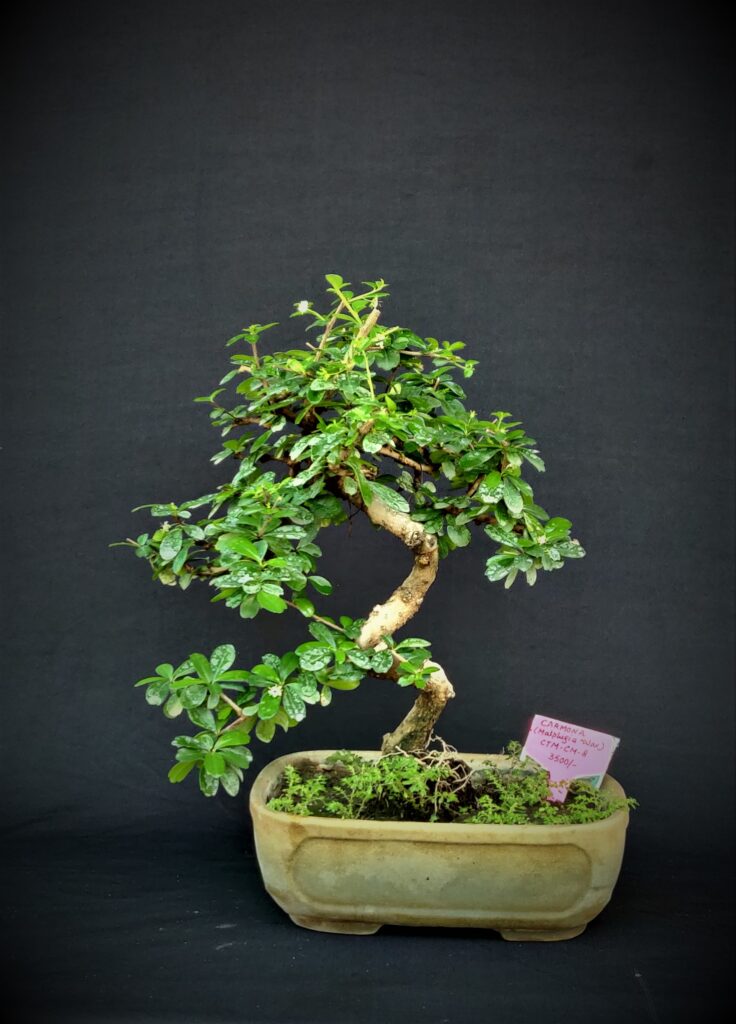
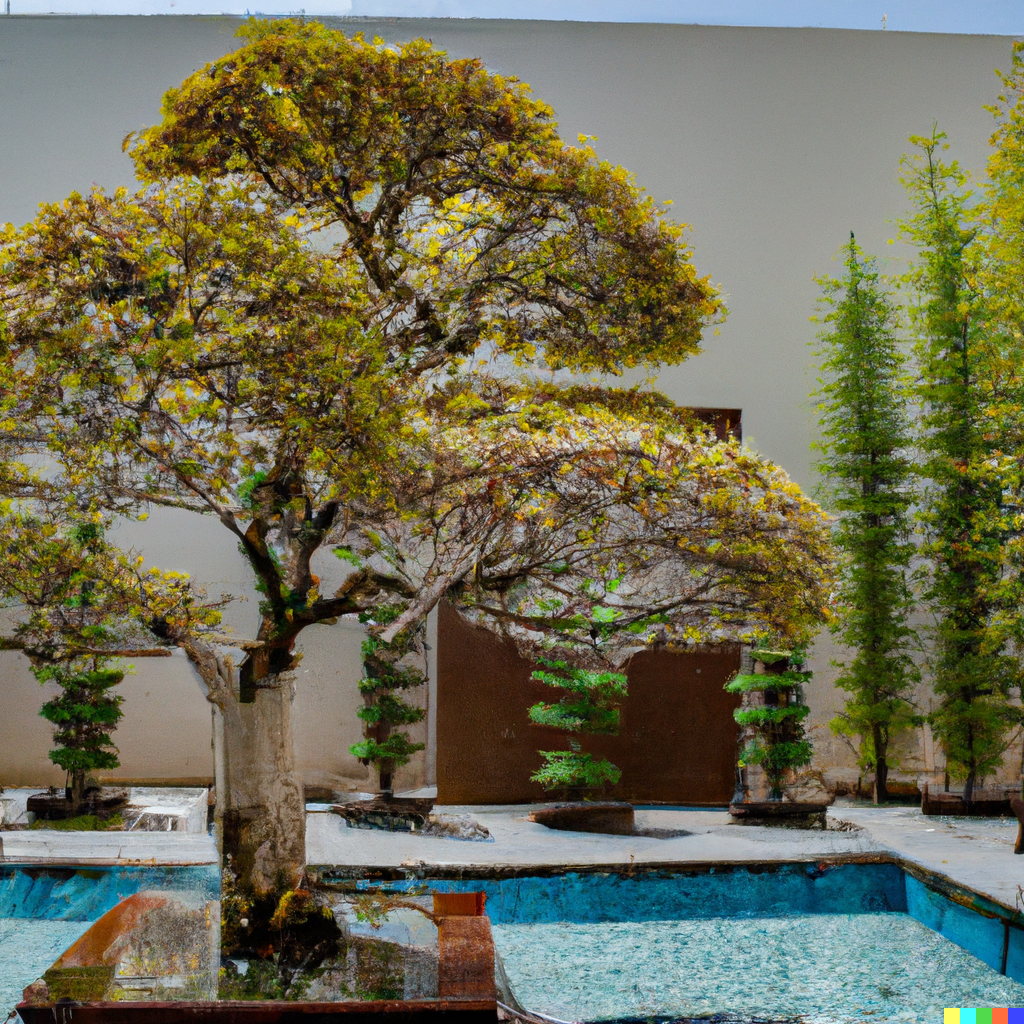
Uses of Carmona as Bonsai or in other Landscape Gardens:
Carmona is a versatile and attractive plant that can be used in a variety of ways in landscape gardening. Whether used as a bonsai tree or a regular landscape plant, it is sure to add interest and beauty to any outdoor space. is also a beautiful and visually appealing plant. Its delicate leaves and small white flowers make it an attractive addition to any garden or landscape. Its small size also makes it a great choice for adding interest and texture to small spaces.
Carmona is an ideal choice for bonsai because it is easy to care for and has a beautiful, delicate appearance.
Carmona can also be used as a regular landscape plant. It is a small evergreen tree that is native to Southeast Asia. It has dark green leaves that are small and oval-shaped. The tree produces small white flowers that bloom in the spring and summer. The flowers are followed by small, red berries.
It is a great choice for small gardens or for adding a touch of greenery to a patio or balcony. It can be planted in the ground or grown in a container. When planted in the ground, it can be used to create a low hedge or border. It can also be used as a specimen plant, planted on its own to add interest to a garden bed.
When grown in a container, It can be used to create a small, portable garden. It can be planted with other small plants, such as succulents or herbs, to create an interesting and varied display. It can also be used as a focal point in a container garden, planted on its own or surrounded by other plants.
One of the benefits of using Carmona in landscape gardening is its ability to tolerate pruning. It can be pruned into a variety of shapes and sizes, making it an ideal choice for topiary or other sculptural forms. It is also easy to maintain as a small bonsai tree, making it a popular choice for beginners in bonsai gardening.
Another benefit of using Carmona in landscape gardening is its ability to adapt to a variety of growing conditions. It can tolerate both full sun and partial shade, and is not particularly fussy about soil type. However, it does prefer well-draining soil and can be sensitive to over-watering.
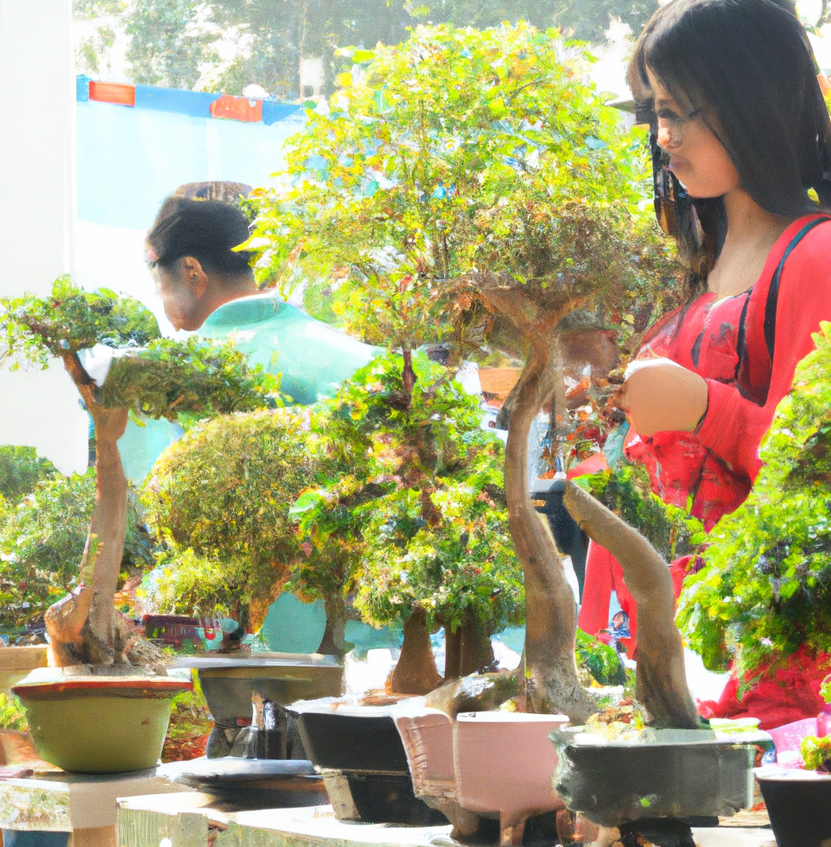
Carmona Bonsai Market and a Plant Species for sustainable income generator:-
- Carmona Bonsai in Real Estate Market Delhi NCR
Plant Bonsai Propagation.
Topiary
Hedges
animal figures
Heart Shaped Pots.
Above are various Topics on this special plant species are discussed here.
Bonsai in Real Estate Market Delhi NCR.
As discussed above bonsai and plants of various types are easy to produce and maintain in Delhi & NCR. The Real estate Market in Delhi & NCR is booming at a fast pace. every project wants to present itself as the best and eco-friendly in front of customers. Here comes a business opportunity and exploit Carmona to grow your business as a mainstream career option or as a side hustle. If you’re interested in learning more about Carmona bonsais and how to turn them into a profitable venture, there are plenty of online resources and communities you can join. You can also attend workshops and courses to get hands-on experience and guidance from experts on our youtube channel bonsai simplified
Plant Bonsai Propagation.
Discover the step-by-step process for propagating a Carmona plant. From taking cuttings to rooting and potting, learn how to propagate this beautiful bonsai plant and expand your collection and income. We will discuss this in other blogs. Meanwhile, if you are interested an email can be dropped at delhi.bonsai@gmail.com or contact@delhibonsai.com.
The following ideas can also be explored for making some quick money and growing your career.
Topiary
Hedges
animal figures
Heart Shaped Pots.
